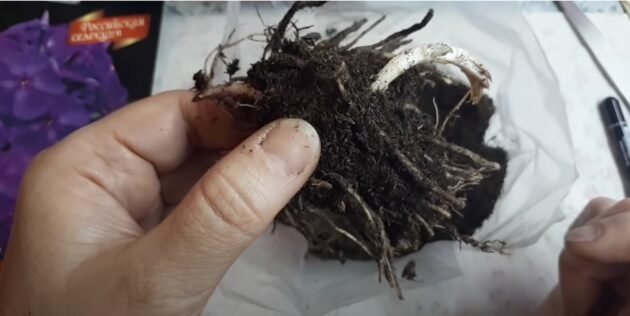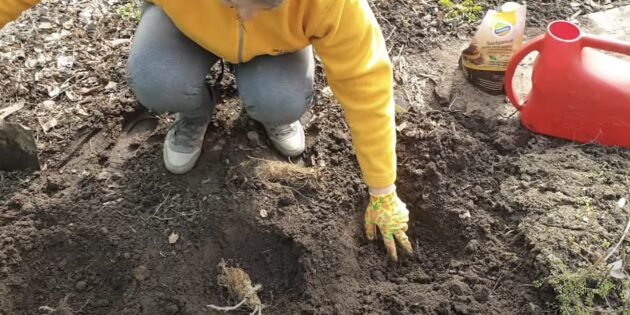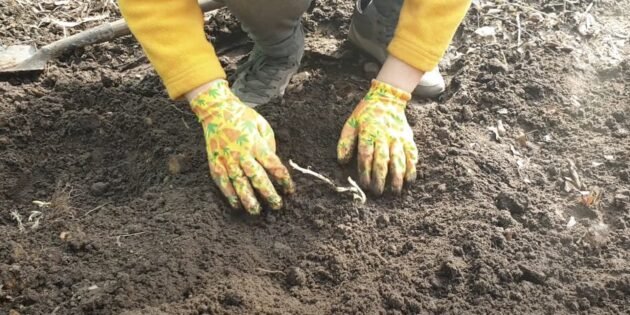There are two suitable periods. In the spring, phloxes are planted as soon as the snow melts and the soil thaws. For the south, this is approximately the first half of April; for the middle band — mid—April — early May; for the north - May.
Also, phloxes are placed on flower beds near the end of the season — from the last days of August to the beginning of October. Focus on the climatic features of your region: it is important to have time to plant a rhizome 3-4 weeks before frost, so that the plant can take root on the eve of winter.
Rhizomes of flowers can be found in garden centers.
Phloxes differ in the size of the bush and the time of the beginning of flowering. The smallest — creeping varieties — reach only 5-15 cm in height. The dwarf group grows up to 25-35 cm, and the medium—sized group grows up to 40-70 cm. These three types of phlox bloom in late spring and early summer.
Tall phloxes reach 90-180 cm in height, and their flowering begins closer to the middle of summer.

The color of the petals can be very different — from snow‑white to rich burgundy. Creeping and dwarf varieties produce many individual flowers of a simple shape, so that the plant resembles a bright carpet. Medium-sized and tall blooms with lush caps on the tops of the stems.
Usually the rhizomes of these flowers are sold in transparent bags and are wrapped in peat or sawdust. Before buying, carefully inspect the planting material. Phlox should have living kidneys, which may even start to grow a little.

The root system of a healthy seedling is well developed and has many branches. Make sure that most of the phlox roots are alive and have a light shade.

Tall and medium-sized phlox should be planted at a distance of 40-60 cm from each other. Low and creeping — at a distance of 30-40 cm .
It is best to plant phlox on sunny flower beds — so their flowering will be bright and lush. Light shading is also allowed during the midday hours. It is not necessary to place these plants in dark places — due to lack of lighting, the flowers will be small and will lose their decorative effect.
For tall and medium-sized phlox, areas blown by a strong wind, which can break the stems of the plant, are not suitable. Also, the flowerbed should not be located in a lowland or in another place where water stagnates in the soil. Phlox prefer neutral or slightly acidic soil — pH from 5.5 to 7.0.
Their size depends on the volume of the root system of the seedling. The pit should be about 10 cm deeper than the length of the roots, and the diameter should be 10-15 cm larger than the phlox in width.
At the bottom of each well, pour 2 tablespoons of superphosphate and mix the granules with the ground so that they are evenly distributed.

Place the seedling in the hole so that its shoots are directed upwards. The root neck (the junction of the roots and kidneys) should be a maximum of 4-5 cm below the ground surface. If necessary, add more soil to the bottom of the hole or, conversely, remove the excess. Then carefully straighten the roots of the phlox.

Fill all the voids around the roots with soil. Lightly seal its surface with your palms.

Pour the phlox liberally. One plant will need about 5 liters of water.
Do not allow the soil to dry out on the flower bed, but also do not overdo it with watering: the soil surface should be slightly moist. The regularity of the procedure will depend on the quality of the soil and the weather. For the first time after planting, try to water the phlox with a watering can with a diffuser nozzle, so as not to blur the soil and not expose the rhizome of the plant. With the arrival of frosts, it is not necessary to moisten the earth.
At least once a week, loosen the soil around the phlox to ensure oxygen access to their roots. Remove all weeds in a timely manner. They not only spoil the appearance of the flower bed, but also take nutrients from the soil.
After the autumn planting, you do not need to do this — the phlox will have enough of the substances that you poured into the hole. If you moved the plant to the flower bed in the spring, then the first fertilizing should be carried out as soon as buds begin to form on the bush. Dissolve 30 g of ammonium nitrate in 10 liters of water and pour the flowers under the root. This volume of the mixture is enough for 1 m2 of flowerbeds.
The next time fertilizers are applied during the active flowering of phlox. In 10 liters of water, dilute 20 g of potassium sulfate and 20 g of superphosphate. Pour the plants under the root at the rate of 10 liters of solution per 1 m2 of plantings.
When the phlox blooms, feed them again. To do this, dissolve 20 g of potassium nitrate, 40 g of wood ash and 40 g of superphosphate in 10 liters of water, and then pour the plants under the root. For 1 m2 of flowerbeds, 10 liters of nutrient fluid will be needed.
All fertilizing is important to carry out in the evening so that sunlight does not burn the stems. Also remember that fertilizers are applied to moist soil — this protects the roots.